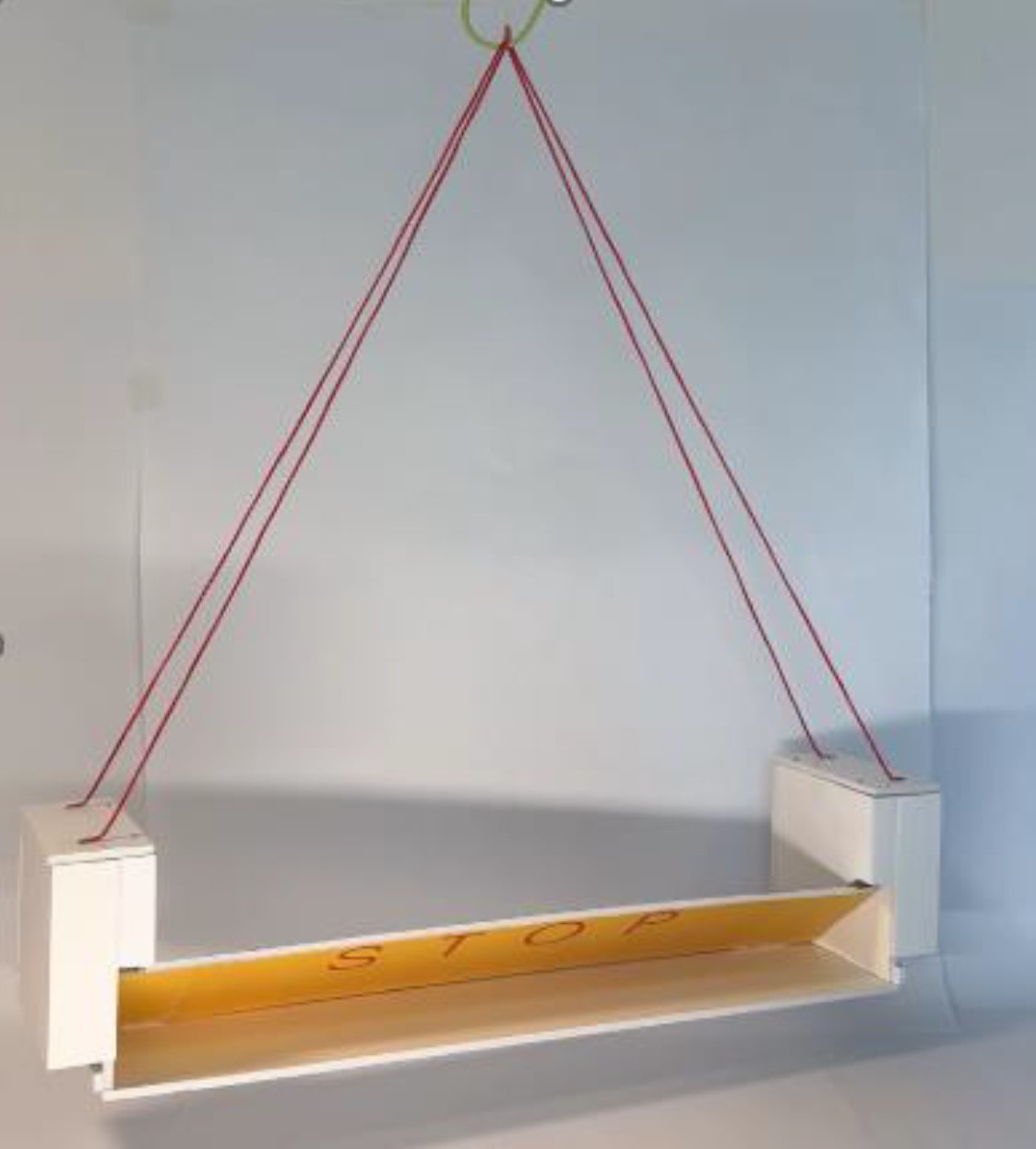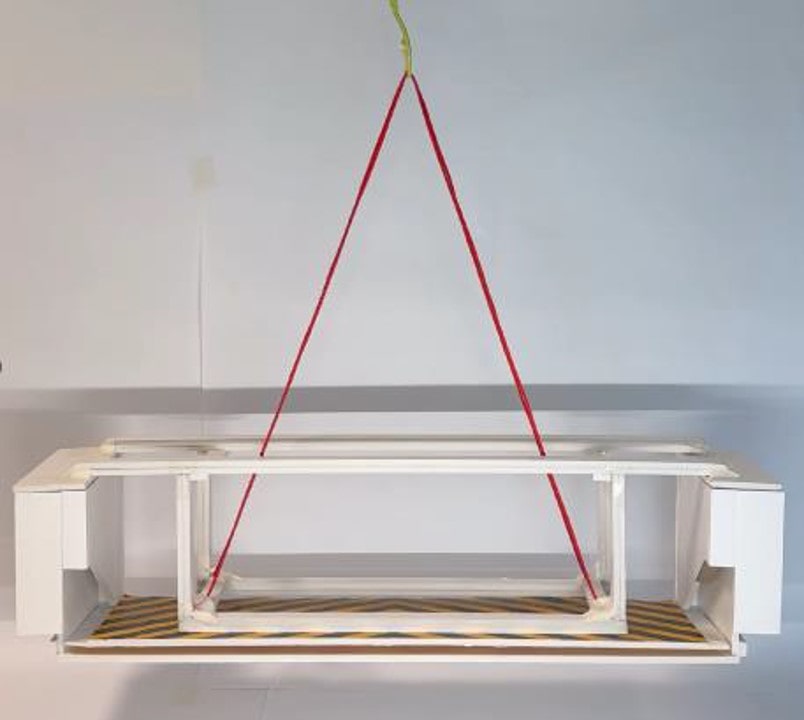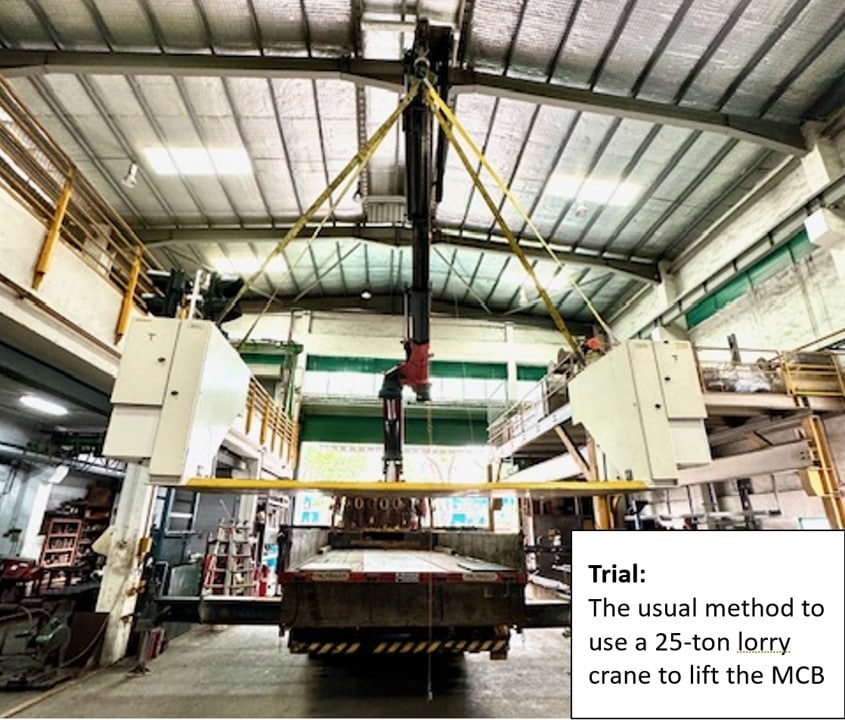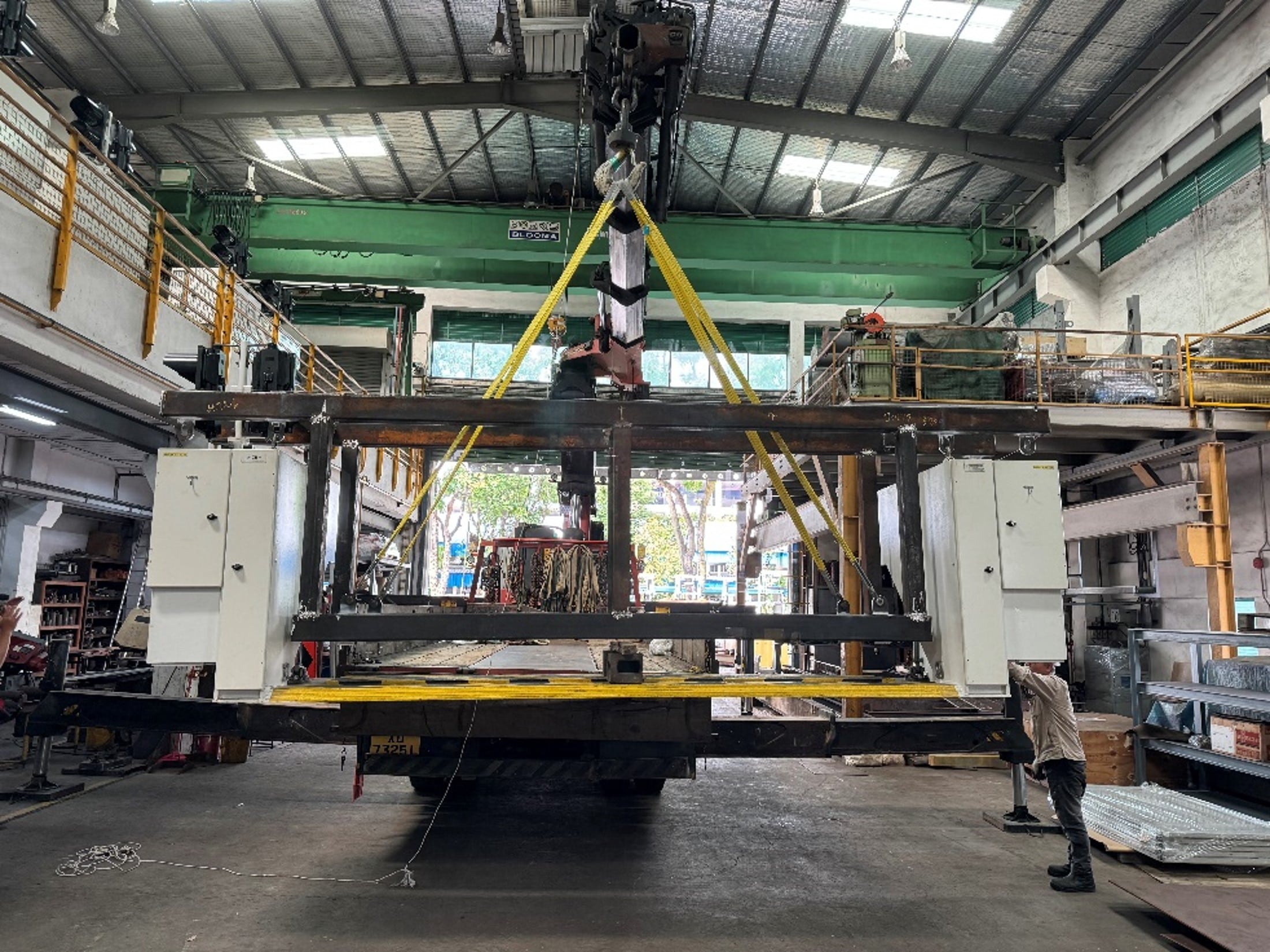HTX and the Police Logistics Department have created the Mobile Crash Barrier (MCB) Spreader Beam to reduce the lifting height of MCBs
The Mobile Crash Barrier (MCB) is a key tool for protection against vehicular threats. Given the robustness and sheer size of this equipment, it is no surprise that transporting and setting it up comes with its own set of challenges.
And this is where HTX’s Platform Systems and the Police Logistics Department (PLD) got to shine.
 To an unsuspecting hostile vehicle, the MCB might seem like a regular gantry. (Photo: SPF)
To an unsuspecting hostile vehicle, the MCB might seem like a regular gantry. (Photo: SPF)
MCBs are deployed using lorry cranes, which typically require significant height clearance to lift the hefty barrier. This means that deploying MCBs in areas with low height clearances can cause a headache for security officers.
To resolve this challenge, HTX worked together with the Police Logistics Department (PLD) to come up with a solution that involves attaching a spreader beam to the MCB that allows for the MCB’s harness attachment points to be situated lower. This in turn reduces height requirements during deployment.
Mock Up of the MCB Spreader Beam
 |  |
| Mock up: Normal lifting of the MCB | Mock up: Lifting the MCB with a spreader beam |
Actual Prototype of the MCB Spreader Beam
 |  |
Prototype: Normal lifting of the MCB (8.8m high) | Prototype: Lifting the MCB with a spreader beam
(6.7m, reduced by 2.1m) |
(Photos: SPF)
Although this might sound like a simple solution, the HTX engineers had to put their idea through many rounds of trials before it became viable.
“One of the hardest parts of the project was determining the right number of harness attachment points to use. If we used too few harness attachment points, the MCB could lean too much to one side and fall off during deployment. However, using too many harness attachment points would also make the spreader beam more cumbersome to deploy,” explained Oliver Lim, Engineer, Unconventional & Special Threats, Platforms Systems.
In the end, the team found the sweet spot with four harness attachment points.
For their efforts, the HTX team was awarded the Dare to Try Award at the 2024 Home Team Innovation Awards (InnovA).